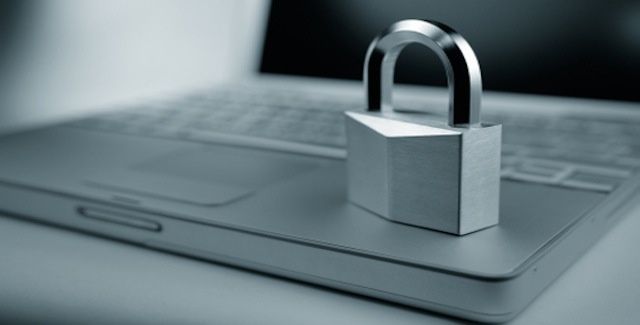Apple will launch the next iPhone (presumably named the iPhone 5) along with iOS 6 tomorrow. The new iPhone is expected to pack a range of updates that will make it a much more significant release than last year’s iPhone 4S. The biggest expectation is that the iPhone will include 4G LTE support and that, unlike the new iPad, it will support LTE bands used outside of North America.
We won’t know all the details of the iPhone 5 until Apple’s unveiling at the Yerba Buena Center. There are, however, three important issues that business users and IT managers will need to in mind during and after following tomorrow’s launch event – all three of which could have a significant impact on bring your own device (BYOD) programs that encourage users to bring their personal mobile devices into the office.
LTE Is Great For Business, But Bad For Expense Management
LTE’s big boost for mobile professionals may come with big bills.
Apple is rather late to the 4G party, having launched its first LTE device a year or more after most other mobile device makers had begun to establish themselves in the 4G market. Now that the mobile industry has largely standardized on LTE as the future of mobile broadband, Apple has joined the party.
LTE is a significant boost for mobile professionals. The data transfer speeds are more than a simple order of magnitude better than those offer by 3G standards. That means that professionals on the go will be able to access Internet, cloud, and remote network resources at speeds comparable to or better than their home Wi-Fi network and, in some cases, their employer’s corporate Wi-Fi network. That’s a big boost in mobile productivity, particularly if carriers offer that offer tethering of other devices like Wi-Fi iPads, MacBooks, and PC notebooks at no additional cost.
That big boost, however, may also mean big bills. Although most carriers offer LTE plans comparable in price to their 3G data plans, LTE’s performance makes it easy to blow through data caps on those plans much more quickly. It also discourages the use of public Wi-Fi networks, particularly in locations where Wi-Fi coverage is spotty or slow. Why pay for or put up with a hotel’s sluggish connection when your LTE connection is five times as fast?

Those expenses pose challenges in business contexts. How can businesses manage corporate-owned iPhones in such a way that they allow LTE use when needed but curtail it when there are other alternatives? The current mobile device management (MDM) capabilities in iOS don’t offer a real solution. IT can disable voice and data roaming as well as disable some services while roaming like automatic sync with iCloud.
That’s a positive, but it doesn’t address the real problem – companies may want to limit LTE use when users are not roaming.
Similarly, MDM can configure multiple Wi-Fi networks and force a device to join those networks automatically when available, but that only works for setting up known networks. One option is to use a service like iPass that provides enterprise Wi-Fi at thousands of locations around the world, but even that may not be an available or effective solution all of the time.
LTE can discourage the use of public Wi-Fi by mobile employees on the go, which can drive mobile costs higher.
The picture gets even murkier with BYOD iPhones, particularly if there is cost sharing for data service. Employees may rack up overages primarily by using their devices for work, but personal use almost certainly contributes to those overages. Voice calls can be itemized expenses because the numbers for outgoing and incoming calls can be used to identify business calls. Data plans don’t present a way to do the same thing – after all, if you’re in New York for work and use LTE service for both work and personal tasks, there’s no easy way to separate the two, particularly if they happen simultaneously like checking work and personal email accounts at the same time.
Mobile Commerce Blurs The Line Between Personal and Professional
Mixing the personal and professional, Passbook raises questions about data sprawl and security.
There’s plenty of discussion around how and when Apple might enter the mobile payments market with an iPhone-based iWallet. Passbook in iOS 6 is definitely a step in this direction. Whether Apple will use NFC as its mobile payment technology like Google does isn’t certain. Apple could use scannable onscreen codes, location-based payments in the model of Square and Tabbedout, or even develop a payment system around existing technologies like Bluetooth.
Apple probably won’t introduce an iWallet feature tomorrow, but that doesn’t mean mobile commerce is off the table. After all, Passbook lets you manage a range of physical and electronic commerce features – boarding passes, coupons, movie tickets, reloadable gift/payment cards, merchant loyalty program cards and so forth.

Passbook presents an interesting conundrum for devices that bridge our personal and professional worlds. Most of the items stored in Passbook will be personal, at least initially, but Passbook does have some business uses – airline boarding passes for business travel being the most obvious. Membership in a loyalty program for employers, like those provided by some office supply stores, is another one. Rewards programs that are personal but get used in association with business tasks like frequent flyer programs or gas station loyalty programs used with a company-owned (or rented) car are two other examples where there isn’t a clear personal/professional separation.
In mixing personal and professional programs in a single app, Passbook presents questions about what data is appropriate for a company to wipe on a lost iPhone or when an employee leaves the company. If Apple unveils a true digital wallet that can include credit and debit cards, that question and concern will be even greater if employees with company cards put them into their iPhone – not to mention if they accidentally use a company card to pay for a personal item.
Passbook data stored outside the company firewall is also a concern, be it through iCloud or backup of a device to a home computer. In fact, this could be one of the more serious implications of the phenomenon known as data sprawl in which mobile devices and cloud services lead to business data being stored across different devices and services with no central point of document or permissions management.

The Business Upgrade Cycle – Will Employees Get An iPhone 5?
Apple’s annual update cycle could fragment a company’s mobile security and management capabilities.
Apple has established a pretty predictable upgrade cycle for iOS. We can expect to see a new iPhone, iPad, and iOS version each year. Carriers, on the other hand, don’t offer a one-year cycle for subsidized devices. That means most iPhone users in the U.S. upgrade their iPhone every other year. Businesses, schools, and other organizations typically have slower upgrade cycles that often involves replacing technology every three or more years.
These out-of-sync upgrade cycles and Apple’s decision to offer older iPhones as entry-level models presents two potential issues in the workplace.
The first issue is one of employee morale. If employees are stuck with an iPhone 4 (or even an iPhone 3GS) and/or a first generation iPad while their coworkers are using an iPhone 5 and new iPad, there’s the potential for tension, hurt feelings, and employees questioning of why they didn’t get the newest work device. That doesn’t mean someone will go postal as a result of not getting a new iPhone. However, in today’s economy where raises are few and far between, perks like technology upgrades are one way that managers can show appreciation and build morale – and that shouldn’t be overlooked.
In today’s economy perks like new mobile devices can be an effective a way to build morale.
Obviously, offices with BYOD programs aren’t likely to have those same morale issues since employees can choose their own devices. That doesn’t mean that everything is rosy in the BYOD world.
Apple is notorious for cutting support for older devices in new OS and app releases – both in the desktop and mobile spaces. iOS 6 drops support for the original iPad and iOS 5 dropped support for the iPhone 3G. Even the devices that iOS 6 support won’t get all of the iOS 6 features. The iPhone 4 won’t get FaceTime over 3G or turn-by-turn navigation, for example.
This becomes an issue for businesses in both BYOD and traditional corporate-owned environments because it fragments the features available to employees. More important, it fragments the security and device management capabilities. If Apple includes a range of new security and management capabilities in iOS 6, companies with a large population of original iPads won’t have access to those improvements.

Obviously, this issue is more about iOS than the iPhone 5, but it becomes an issue for companies (or individuals) choosing entry level or mid-range iPhones rather than more expensive brand-new models. If Apple drops the iPhone 4 to free with contract, as it did last year with the iPhone 3GS, a business user or company might see that as a great bargain – and it will be one, but one that may pose challenges a year or two from now.
Ultimately, these issues are part of the broader questions and concerns posed by the continuing consumerization of workplace technologies and the BYOD movement and, like many questions posed by those trends, there aren’t solid one size fits all answers.
![Three Critical Business Dilemmas The iPhone 5 Will Create [Feature] Even before its launch, the iPhone 5 is creating concerns and challenges for businesses and IT departments.](https://www.cultofmac.com/wp-content/uploads/2012/09/7378963508_e8a458a51b_z-1.jpg)

